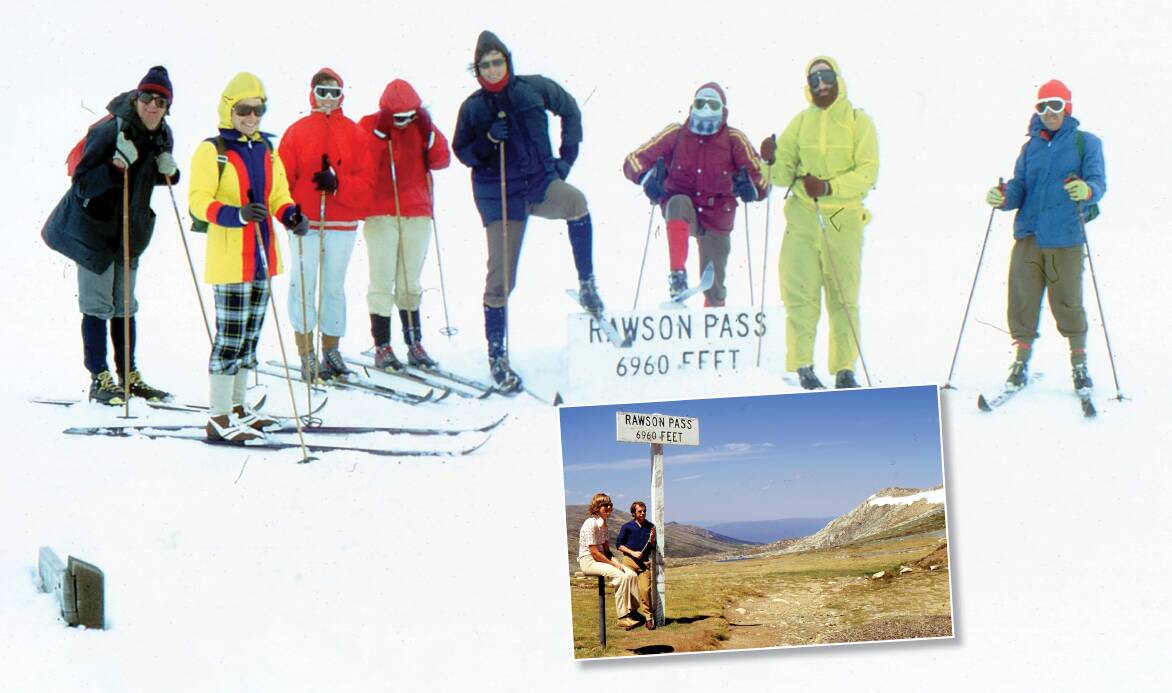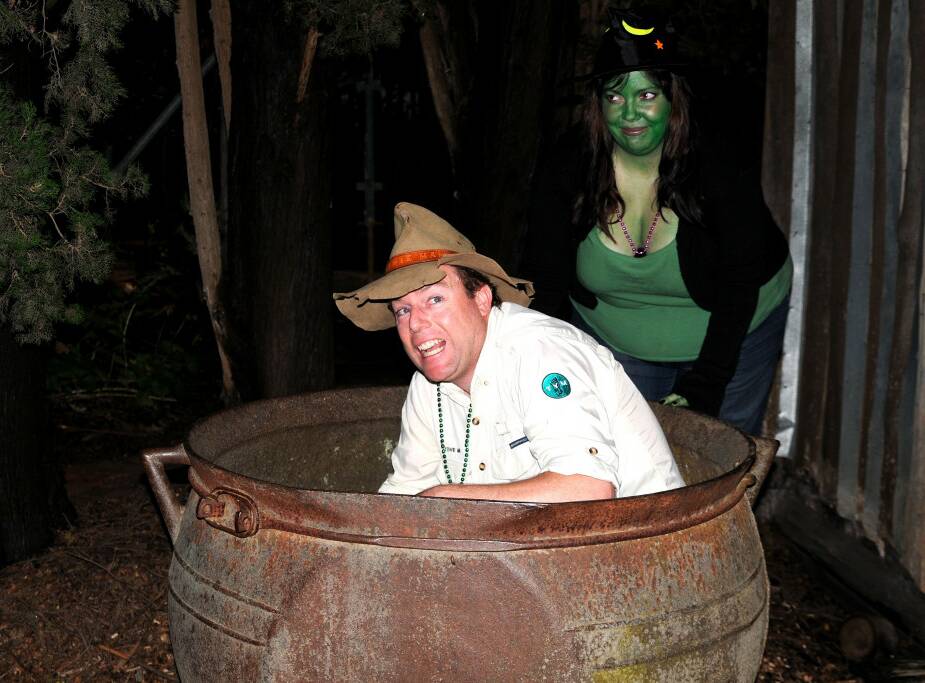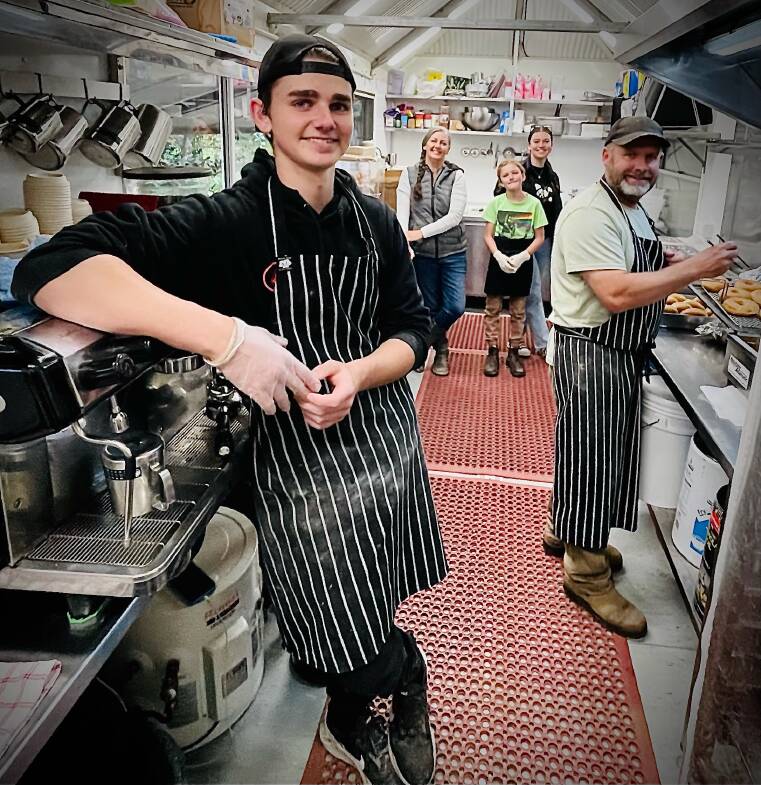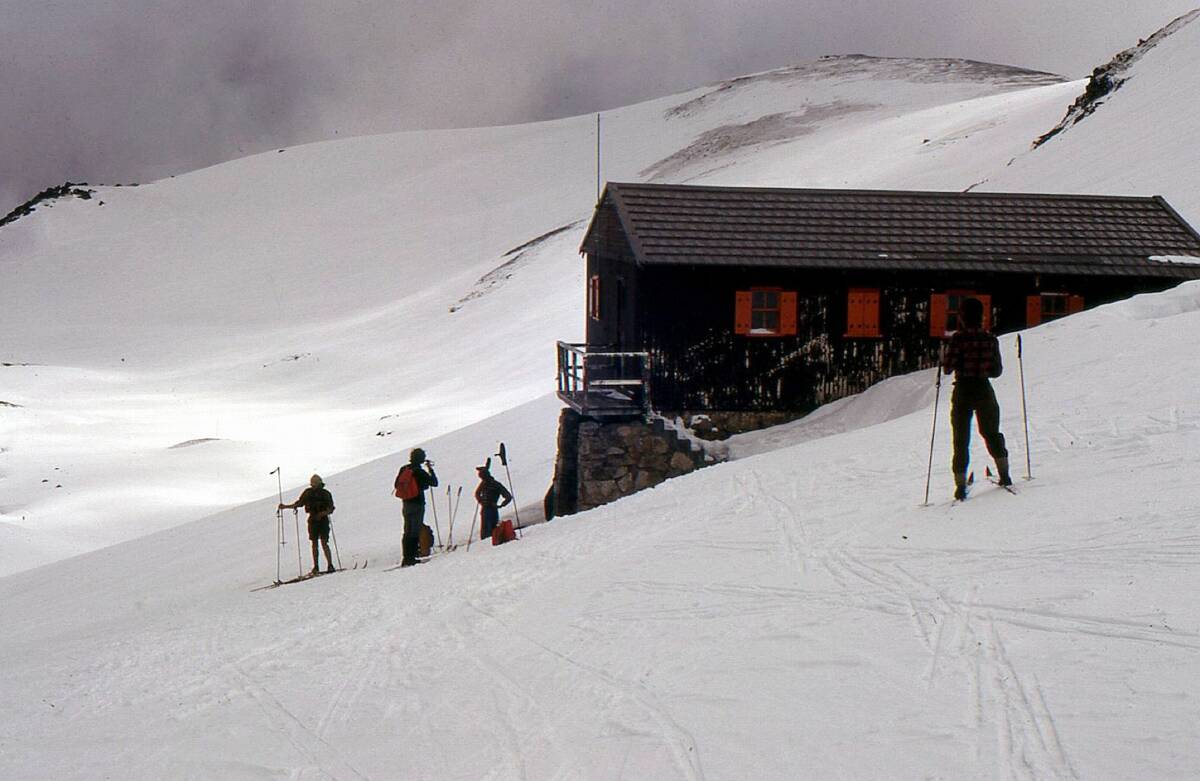
Several readers, including Bill Crawshaw of Fadden, responded to my recent request for photos of high-country landmarks before and after dumps of snow.
Bill's drool-worthy photos of mountain huts captured on almost half-a-century of cross-country ski tours and summer hikes across the roof of Australia could easily fill a coffee table book. However, the stand-outs are his two 1970s slides (remember in the 1970s many of us took slides instead of film) taken at Rawson Pass, just a few months apart.
Unlike many remote huts which are only visited by the super adventurous and fit, the Rawson Pass sign is passed by thousands of walkers every summer as they huff and puff their way from Charlotte Pass to Mount Kosciuszko. And look at those vibrant colours of their gear and the sense of adventure etched on the faces of the skiers. Love it.
Given the 2.5-metre-high sign is almost buried, you'd think the snow photo was taken in mid to late winter, but it wasn't.

"I took it on October 12, 1974," reports Bill, explaining, "the 1974 winter brought some of the heaviest snow falls to the Snowy Mountains that I have ever seen in my 49 years in Canberra. There was skiable snow on the Rams Head and the Main Ranges until the end of November.
"I was with a group of friends, most of whom had started cross-country skiing in the 1974 winter," reports Bill. "As it was a white-out day, we skied along the then snow pole route from the top of the Thredbo chairlift to Rawson Pass, then down to Cootapatamba Hut and return.
"Despite the white-out, my diary records that the day was fine, the wind was light, and we were on red klister ski wax," reports Bill.
In January 1975 during a day hike with two friends to view the abundant and colourful displays of alpine wildflowers, Bill re-photographed the same scene. What a difference three months can make.
For the record, Bill moved to Canberra in March 1973 and was encouraged by a couple of work colleagues to try cross-country skiing. "They taught me the basics on gentle slopes around the edges of the ski resorts during the 1973 winter, and by winter 1974, I was hooked on exploring The Snowies and the huts."
While the 1960s/70s was the heyday for ski touring, on recent visits to the high country, I've noticed more and more people heading backcountry. Perhaps it's experiencing a renaissance? With the inflated prices and over-crowding on the slopes of the resorts, I'm not surprised.
What happened to the whale pot?

Prompted by last week's exposé on Blundells Cottage, several readers, including Jeremy Jones of Kambah, asked, "Whatever happened to the whale pot that was on display for many years in the courtyard?"
"I remember jumping into it during a school excursion in the 1990s," explains Jeremy.
I, too, remember the popular pot fondly, featuring it on many historical tours of Canberra I hosted in the early 2000s.
The "try pot" (it's official name) was one of two purchased by the Duntroon Dairy in the late 1800s from an Eden whaling operation which had previously used the cauldrons to boil raw whale blubber to extract oil.
According to National Capital Authority (NCA) attractions manager Roslyn Hull, once at the dairy "they were used for rendering fat and (possibly) removing the bristles from pigs as part of the butchering process".
In the 1960s, one of the pots was acquired from the dairy for display at Blundells Cottage, although it is unlikely a pot of that size would ever have been used there.
"We certainly haven't found any record of it actually being used onsite," explains Roslyn.

So where is it now? Well, according to Roslyn, "when a major restoration and landscaping project was undertaken mid-last decade, the NCA used this as a catalyst to redefine the story told at Blundells Cottage."
Rather than a general 19th century collection, the focus shifted to the actual occupants - the story of the workers, women and children that lived there over the 100 years it was a dwelling.
"Part of this review included returning items, if possible, that were no longer required," explains Roslyn. "Therefore the whaling pot was returned to Duntroon Dairy."
While the pot may have a stronger historical connection to the dairy than Blundells Cottage, with the dairy locked behind several gates and inaccessible to the public but for (very) rare open days, the story of the pot is in danger of being lost. At least at Blundells Cottage it provided a tangible talking point for younger generations to discover the trials and tribulations of life in 19th-century Australia.
Interestingly, this is not the first time the whereabouts of the cast-iron cauldron has been in the spotlight. In 1986, in the dead of the night, it was filched by vandals and dumped near Yarralumla.
Kingsley Southwell who, along with Macks Southwell was part of the Blundells Cottage Committee at the time, remembers it well.
"Macks and I went to the police and picked it up and took it back to the cottage and concreted it back in place. We don't know how they [the vandals] got it over the fence, it wouldn't have fit through the gate."
Did You Know? If you look closely at the pot, you can see that it has square sides - that's so a number of them could easily be secured into two rows, one on either side of a whaling ship's deck.
Plenty of sweet places to visit round these parts

Lots of feedback on my recent confession about my long-standing love affair with Braidwood.
While many readers agreed with my glowing assessment of the 19th-century architecture and uber friendly locals, one reader was somewhat miffed with the lack of attention I gave to her favourite shop, Much To Do About Chocolate (198 Wallace Street).
"I'm disappointed that you didn't mention the wonderful lady and her chocolate shop," declares Lorraine Adams of Yarralumla. "It is a most marvellous shop and the owner who gift wraps the chocolates makes sure you leave the store feeling really special".
Lorraine urges me to visit the shop "for all of us chocolate lovers".
Well, Lorraine, while I could think of nothing better than stuffing my gob full of artisan handmade chocolates, I may leave it a few weeks as I'm still recovering from an overdose of Oscars Donuts, located next door.
After revealing the donut van was the brainchild of 15-year-old Brodie (Oscar) Parsons, several readers were intrigued how a Year 10 home-schooled student could take the town by storm with his yeast-raised donuts.
According to his mum, Judy (all good entrepreneurs need a spruiking agent!) "Brodie has always been interested in cooking, since he was about five years old and could fry an egg.
"Life learning and self-directed learning is what home-schooling is all about for us, and so over the lockdown period he started to experiment with making donuts" explains Judy.
"He watched a lot of YouTube videos from donut makers in New York and just kept trying recipes and didn't give up until he was happy with the result."
Brodie started out selling his donuts via Facebook and then when the Braidwood markets re-opened after COVID lockdowns, he set up a stall and once he knew he had a saleable product, bought a van.
Oscars Donuts trades 10am-4pm Friday and 9am-4pm on weekends.
WHERE IN THE SNOWIES?

Rating: Medium - Hard
Clue: 1951-1983
How to enter: Email your guess along with your name and address to tym@iinet.net.au. The first correct email sent after 10am, Saturday July 16, wins a double pass to Dendy, the Home of Quality Cinema.

Last week: Congratulations to Dianne Prime of Taylor who was first to identify last week's photo of the African Queen plying the waters of Lake Jindabyne.
DOUBLE-TAKE

Graeme McKie of Narrabundah submitted a ripper Canberra example of re-photography, the art of taking a photo of the same scene many years apart.
Graeme's mum took the original photo of Graeme with his HR and his dad's FC outside their old family home in Narrabundah in 1979 and "with the kind permission of the then residents of the house", Graeme took the 2019 shot.
"A mate of my brother asked if I was still wearing the same underpants," laughs Graeme, who admits he "did have a bit of trouble locating a similar flannelette shirt".
Graeme has owned and continually registered the same HR in his name for 43 years. "I bought it when I was 18," reveals Graeme, adding "my dad said, it won't last'!"
As for the FC, according to Graeme "it has been continually registered in our family name for 57 years. He wonders if that makes it the oldest continually registered vehicle in a family name in Canberra.







